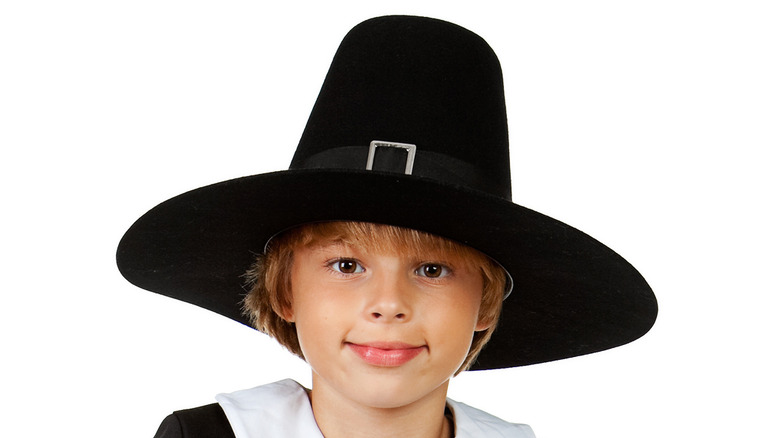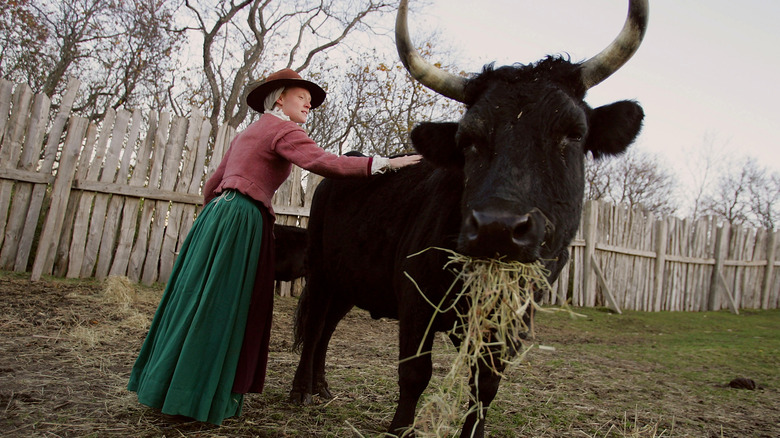The Myth About Pilgrims You Need To Stop Believing
For centuries, American schoolchildren have been taught that "the Pilgrims" — a devoutly Christian group fleeing religious persecution in Europe — arrived in North America on the Mayflower in 1620, setting into motion a series of events that would lead to the formation of the United States of America nearly two centuries later. That is true, up to a point, but such a simple narrative leaves out considerable historical, cultural, and religious nuance.
For much of this period, the Pilgrims have been depicted according to a certain archetype: specifically, dressed head-to-toe in mostly black, wearing conical hats adorned with a buckle. You or one of your children may have at one time dressed that way for Halloween or for a school play (as depicted in the image above).
As it turns out, the Pilgrims didn't actually dress like that. Some of the elements are somewhat accurate, but in the main, popular culture has gotten it wrong.
The Pilgrims wore bright colors and buckle-free hats
We'll begin with what may be the most obvious feature of the Pilgrim costume as it's depicted in popular culture: the black, buckled hat. As Medium explains, that hat in question is called a capotain. It was a popular fashion accessory in Europe at the time, and the group that would come to be known as the Pilgrims wore it. However, the buckle was a bit of fiction added by illustrators a century later, possibly by Victorians who were romanticizing their past, according to History of Massachusetts. And when you think about it, what purpose is there in putting a buckle on a hat?
You can forget about the Pilgrims dressing in all black, too. As The Mayflower Society notes, historical records from the time record men and women both wearing violet, blue, green, and red, albeit in darker shades. To this day the society offers period-accurate costumes for sale to actors wishing to dress like authentic Pilgrims.

